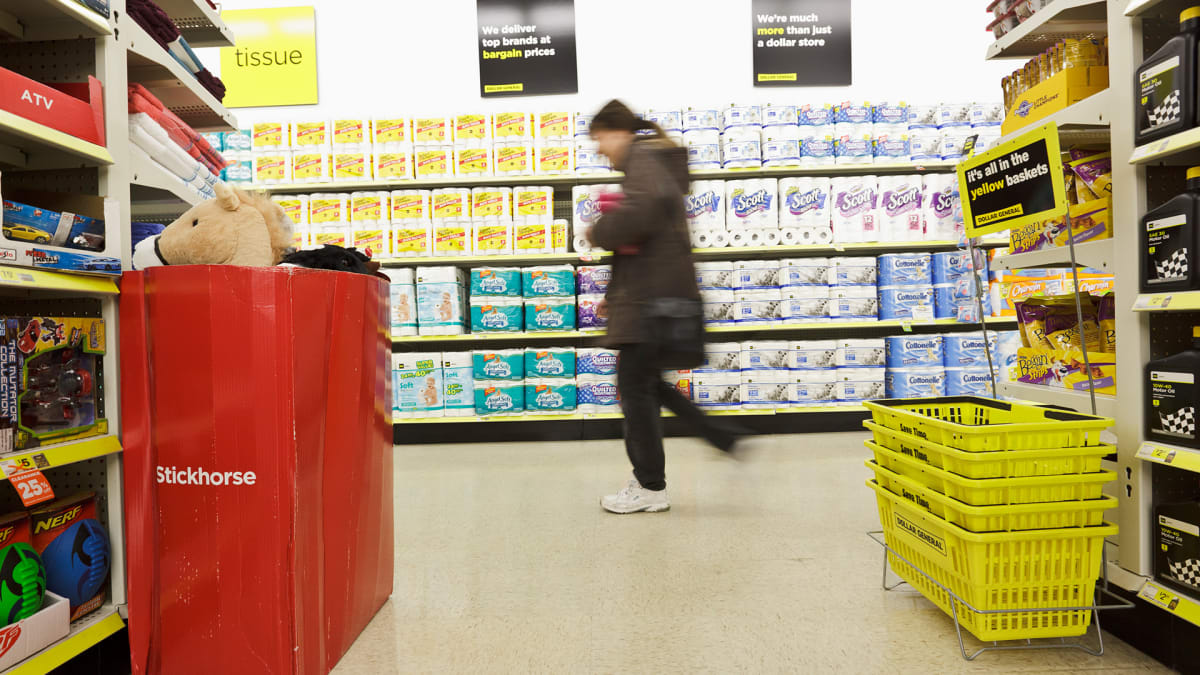
Dollar General (DG) Chief Executive Jeff Owen just acknowledged what people blessed with common sense intuitively understand: Understaffed stores lead to bad customer service and lost sales.
During a recent conference call to discuss the fiscal-fourth-quarter earnings, Owen said the retailer would invest $100 million this year in stores to “capture additional market share by further enhancing … the in-store experience.”
That sounds great on the surface. But his remarks suggest that Dollar General has severely underinvested in its stores at a time when the dollar store format is booming.
Most of the $100 million investment, Owen said, will go to increasing hours for employees so they can meet “our expectations regarding consistent store standards.”
Which, of course, means shopping at Dollar General is like playing craps: You might get a decent store or you might roll snake eyes.
Not Enough Employees to Stock Shelves
Owen identified a specific consequence from the staffing shortage: empty shelves.
While all retailers have reported supply-chain problems stemming from the pandemic, Dollar General’s problem is not the lack of merchandise but rather the lack of someone to physically place products on shelves. That’s a big problem for a format that sells merchandise that typically turns quickly.
“We believe this investment will position us to drive greater on-shelf availability and capture additional market share while amplifying the potential of our initiatives and ensuring our readiness for our growing customer base,” Owen said.
Dollar General is hardly the only retailer to play it cheap with staffing expenses. During the pandemic, retailers, including Target (TGT), Walmart (WMT) and Starbucks (SBUX), had to raise wages and even offer bonuses and benefits to attract workers who didn’t want to risk contracting covid just to earn minimum wage.
Although the pandemic has eased, retailers are still struggling to hire and attract workers.
In December the organizational consulting firm Korn Ferry released a survey in which 83% of retailers said they had trouble hiring store employees.
“It’s incredibly challenging to staff stores to ideal levels, so retailers should find unique ways to incentivize workers to join – and to stay,” said Korn Ferry retail expert Craig Rowley. “That may come in the form of flexible work schedules, discounts and other incentives.”
“Competitive compensation is a very important part of the entire employer value proposition,” Rowley said. “It’s critical for retailers to continually assess their pay structures to ensure they can attract and retain the talent they need.”
The Korn Ferry survey said that 25% of retailers plan to pay a minimum wage of $15 an hour in 2023. In the U.S. Dollar General pays cashiers an average of $10.40 an hour, according to job placement website Indeed. A store manager makes an average of $15.17 per hour, just above California’s minimum wage.
Dollar Stores Are Booming
In many ways, dollar store chains can’t afford to skimp on the help. The format has enjoyed strong foot traffic over the past three years.
Dollar General’s foot traffic in January jumped 19.2% over the same month in 2020, according to Placer.ai. Over that same period, foot traffic at competitors Dollar Tree and Family Dollar, both owned by Dollar Tree Inc. (DLTR), rose 21.2% and 19.9% respectively.
“The segment is on a decided upswing as it continues to attract new and returning customers with its attractive retail and grocery options,” Placer.ai said in a blog post. With a shift in how people shop, discount and dollar stores can hope to continue thriving into 2023.”
This year, Dollar General plans to spend nearly $2 billion on capital investments, including opening 1,050 new stores. And that’s on top of the $1.6 billion the company spent last year to open 1,039 stores. Despite a shaky economy and inflation worries, Dollar General expects comparable sales to grow a healthy 3% to 3.5%.
“With the progress we have made in the supply chain, the prior investments we have made in wages, and the growing customer engagement we are seeing, we believe we are well positioned to see a meaningful return on this investment,” Owen said.
“We operate in one of the most attractive sectors in retail and we believe our innovation will continue to distance and differentiate Dollar General from the rest of the retail landscape.”
Assuming, of course, that the company can match their aggressive growth plans with enough employees to stock those shelves.







